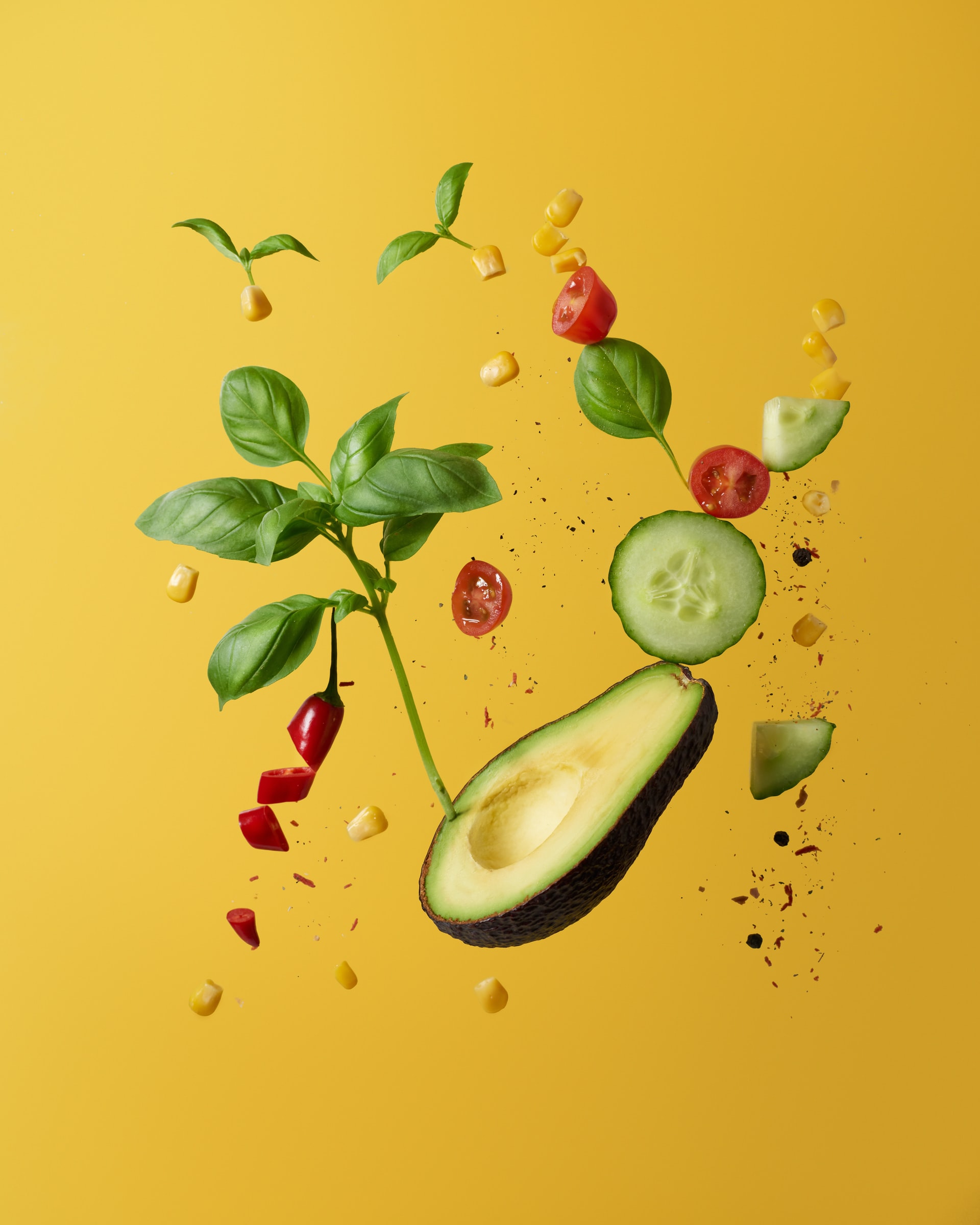Nutrition mistakes that kill 11 million people each year
January 21, 2022

From Europe to Asia and from Africa to the Americas and Australia, none of the culinary traditions, not even those acclaimed by scientists, generate an optimal supply of nutrients. Moreover, the food we eat daily kills 11 million of us prematurely every year. So then, what should we eat?
Nowadays, poor nutrition kills more people than smoking, according to a huge study funded by the Bill and Melinda Gates Foundation and published in the prestigious medical journal, The Lancet. Research has shown that one in five deaths worldwide is caused by inadequate nutrition. Scientists say that poor nutrition, not obesity, is to blame for the diseases with the highest mortality rates today: cardiovascular disease and cancer.
The Global Burden of Disease Study is the most reputable international assessment of causes of death in the world. In the latest edition of this study, scientists filtered the information collected and followed a grid to assess how harmful our eating habits are, how often they are to blame for shortening life, and what we could change in our diets in order to feed ourselves optimally.
The most frequent nutrition mistakes
The researchers concluded that the most dangerous diets are those that contain too much salt (responsible for 3 million deaths), too few whole grains (another 3 million deaths) and those that contain too little fruit (insufficient intake is responsible for 2 million deaths). Other deadly factors were diets with too few nuts, seeds, vegetables, omega-3s and fibre.
“We find that diet is one of the dominant drivers of health around the world, it’s really quite profound”, Prof Christopher Murray, director of the Institute for Health Metrics and Evaluation at the University of Washington, told the BBC.

The most feared killer on our plates
The food that does the most damage is salt. Salt from bread, processed meat or soy sauce is the cause of most deaths caused by an unhealthy diet.
Nearly 10 of the 11 million deaths associated with a suboptimal dietary regimen were caused by cardiovascular disease, the main vehicle of which is high salt intake. Excess salt increases blood pressure, and high blood pressure increases the risk of heart attack and stroke. Salt also directly affects the heart and blood vessels, causing heart failure when the heart stops working properly.
China, for example, consumes large amounts of salt, especially from soy sauce, which is an indispensable ingredient in the national cuisine. Moreover, as Western fast food becomes more prominent in the country, the salt intake in their diet increases even more. Of course, the Chinese could take the Japanese model and completely change the direction of these statistics.
As Professor Murray mentioned, Japan also consumed too much salt 30-40 years ago, as China does today. However, in the meantime, the Japanese have dramatically reduced salt consumption. “And they have a diet that is higher in many of the things we think are protective for heart diseases such as vegetables and fruit,” Murray said. Whole grains, fruits and vegetables have an effect that partially counteracts that of salt and are cardioprotective, thus reducing the risk of heart disease.
Compared to the number of cardiovascular disease deaths, the number of people who die because of cancer and type II diabetes is much lower, but still significant: 1 million deaths each year are caused by one of these two diseases.
The most pressing deficiency
The study found that the foods that are missing from most diets in the world, despite the important benefits they can bring to our health, are nuts and seeds. The researchers explain that many avoid nuts and seeds because of the misconception that they “are little packs of energy that will make you fat.” However, Professor Nita Forouhi of Cambridge University contradicts this view: “(Walnuts) are packed full of good fats. And most people don’t see them as mainstream food; and the other issue is cost.”

Some of the findings from a long-term study on the Californian Adventist population confirmed this recommendation. The risk of having a heart attack decreases by up to 50% if we eat nuts several times a week and by 45% if we eat wholemeal bread instead of white bread.
Walnuts can even be included in the daily diet of the elderly, without having negative impacts on their health, such as gaining weight or having difficulty maintaining an optimal weight. The myth that walnut fat causes fattening and therefore could cause obesity, heart disease problems or diabetes, has been disputed by the Walnuts and Healthy Ageing Study (WAHA), the first comprehensive research to test the role that nuts play in healthy ageing. The scientific investigation was led by Edward Bitok, an assistant professor at Loma Linda University School of Allied Health Professions, in October 2018.
Research conducted by Marta Guasch-Ferré, research associate at the Department of Nutrition at the Harvard T.H. Chan School of Public Health in Boston, has reviewed 13 clinical trials examining the link between walnut consumption and cardiovascular health. The conclusion of the meta-analysis was that because they are rich in unsaturated fatty acids—the healthy fats—, fibre, protein, Vitamin E, folate and minerals such as potassium, zinc and magnesium, but also in bioactive substances such as phenols and phytosterols, nuts make a key contribution to heart health and healthy ageing, significantly reducing the risk of stroke or coronary heart disease.
Unexcused absences
Although discussions about diets are fueled by endless debates about what is more harmful: sugar or fat, and what is more carcinogenic: red meat or processed meat, scientists who contributed to the study published in The Lancet insist that the foods that are missing from the diet have a more harmful impact on health. In addition to nuts, our plates lack other foods with proven health benefits that are not even as expensive as oilseeds: vegetables and fruits.
Sugar, fat, red meat and processed meat can be harmful, indeed, says Professor Murray, “but they are much smaller issues than low whole grains, fruit, nuts, seeds and vegetable intake”. Researchers say it’s time for food health activists to shift their focus from nutrients such as sugar and fat and promote healthy eating instead.
Unfortunately, even initiatives aimed at increasing the health of the population through healthier food choices, such as the fruit and vegetable juices detox trend, are incomplete and end up promoting suboptimal diets. Fruit fibre is not a fad or something negligible, but a very solid source of overall health benefits.
High-fibre diets have been associated with a lower risk of coronary heart disease, heart attack, hypertension and diabetes. And the recommended daily intake of fibre for an adult who wants to improve their health is 30g and 24g for maintenance. The decrease in the absorption of carbohydrates, proteins and fats is another neglected advantage of fibre that is lost when we opt for juicing and focus only on the fact that juices contain vitamins.
What should we eat then?
If we could completely erase from our brains the memory of all the “miracle diets” that have been promoted over time and keep only the essential ideas that are supported by the scientific community, we would assimilate some principles that are so simple, but so often ignored.
The EAT-Lancet Commission on Food, Planet, Health brought together 37 world-leading scientists from across the globe to propose the first full scientific review of what constitutes a healthy diet from a sustainable food system. Experts from a variety of fields, from agriculture and animal husbandry to climate change specialists and nutrition experts, have announced a “planetary diet” designed to meet the food needs of the 10 billion people that are estimated to inhabit the planet around the year 2050.
According to the researchers, the food of the future is one dominated by vegetables, fruits and oilseeds, while meat or dairy products are peripheral. The scientists even recommend that most of the protein in our diet should come from oilseeds and legumes (such as beans and lentils) and we should give up the habit of daily eating meat in various forms. Moreover, they recommend indulging in only one burger per week and one steak per month, at most. We can eat fish or chicken twice a week, say the members of the commission, and get the rest of our protein from plant foods.
A non-ideological conclusion
Discussions about healthy eating have the ability to polarise people almost as quicklly as those about religion or vaccines, or any other topic that today has increased media exposure and a variety of hard-to-index information. Talking about healthy snacks or the benefits of brown rice may be important topics, but they’re not always the easiest to discuss.
Nonetheless, the study published in The Lancet has the advantage of drawing conclusions based on a monumental work of synthesis: the authors inventoried all epidemiological studies that causally connected the consumption of certain foods with the occurrence of certain diseases. The result was the ability to assess how much of a certain food becomes harmful and what would be the optimal level of consumption for 15 types of real foods.
Below is a table of optimal levels of nutrient intake in the diet. With the exception of red meat, processed foods, sugar and fibre—which become harmful if the optimum level is exceeded—in all other foods, the health risks arise because the optimum level of consumption is not reached.
| Average daily intake of whole grains (bran, germ, and endosperm in their natural proportions) from breakfast cereals, bread, rice, pasta, biscuits, muffins, tortillas, pancakes, and other sources | 125 g / day |
| Average daily consumption of legumes (fresh, frozen, cooked, preserved or dried) | 60 g / day |
| Average daily consumption of vegetables (fresh, frozen, cooked, canned, or dried vegetables, excluding legumes and salted or pickled vegetables, juices, nuts, seeds, and starchy vegetables such as potatoes or corn) | 360 g / day |
| Average daily fruit consumption (fresh, frozen, cooked, canned, or dried fruits, excluding fruit juices and salted or pickled fruits) | 250 g / day |
| Average daily consumption of nuts and seeds | 21 g / day |
| Average daily dairy consumption (non-fat, low-fat, and full-fat milk, excluding soy milk and other plant derivatives) | 435 g / day |
| Average daily consumption of red meat (beef, pork, lamb, goat, but excluding poultry, fish, eggs, and all processed meats) | 23 g / day |
| Average daily consumption of processed meat (preserved by smoking, curing, salting, or addition of chemical preservatives) | 2 g / day |
| Average daily consumption of sugar-sweetened beverages (with ≥50 kcal per 226·8 serving, including carbonated beverages, sodas, energy drinks, fruit drinks, but excluding 100% fruit and vegetable juices) | 3 g / day |
| Average daily consumption of fibre from all sources, including fruits, vegetables, grains, legumes and pulses) | 24 g / day |
| Average daily calcium intake from all sources, including milk, yoghurt and cheese | 1.25 g / day |
| Average daily intake of eicosapentaenoic acid (EPA) and docosahexaenoic acid (DHA) (omega-3 fatty acids) | 250 mg/day |
| Average daily intake of omega-6 fatty acids from all sources (mainly liquid vegetable oils, including soybean oil, corn oil, and safflower oil) | 11% of total daily energy |
| Average daily consumption of trans-fatty acids from all sources (especially hydrogenated vegetable oils) | 0.5% of the daily energy intake |
| The 24-hour urinary sodium measured in grams per day | 3 g / day |
Source: The Lancet

The sweet aftertaste
Beyond the different trends that come and go, balance is the most difficult principle to apply. Still, in the end, it’s the only thing that matters. That’s what researchers at Tufts University Friedman School of Nutrition Science and Policy have pointed out, because it’s still necessary. They reaffirmed that the adequate intake of certain nutrients is indeed associated with a reduced risk of mortality, but this only happens when the source of those nutrients is food, not food supplements.
Researchers have found that there is not a single association between the use of dietary supplements and a lower risk of death. In contrast, increased calcium intake, for example, has been associated with an increased risk of cancer death, and researchers say that this excess is associated with supplementing calcium doses to over 1,000 mg/day.
When they compared the nutrient absorption efficiency of food versus supplements, supplements always came out inferior. Specifically, the intake of vitamin K and magnesium reduces the risk of death, but only if these nutrients come from food, not supplements. The risk of cardiovascular disease decreases with increasing intake of vitamin A, vitamin K and zinc, but only if they come from food, not supplements.
And although exceeding the 1,000 mg/day calcium intake threshold has been associated with an increased risk of dying from cancer, no association has been found with the calcium that comes from our diet. In other words, according to another study by Canadian researchers, the most popular vitamins and dietary supplements are not the key to healthy lives but are actually useless.
Beyond the fact that no matter how tempting they may seem, there are no shortcuts to good health. Perhaps the most important takeaway that emerges from the above information is that everyone, regardless of their weight or culinary tradition, can take positive steps towards a more protective diet: more whole grains, more fruits, more nuts and seeds and more vegetables are not only the way to a healthy weight loss regiment and a balanced diet but could bring a variety of flavours that is good for the psyche.
Curious about how you can eat healthy? Try our free course here, or contact us with any questions or comments here.
Alina Kartman is a senior editor at ST Network, the European version of Signs of the Times A version of this article first appeared on their website and is republished with permission.








